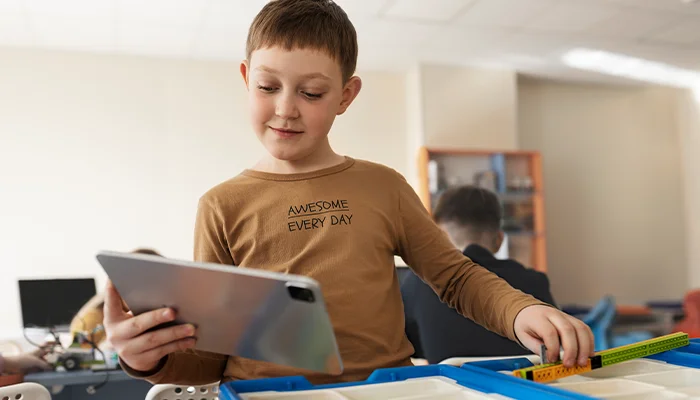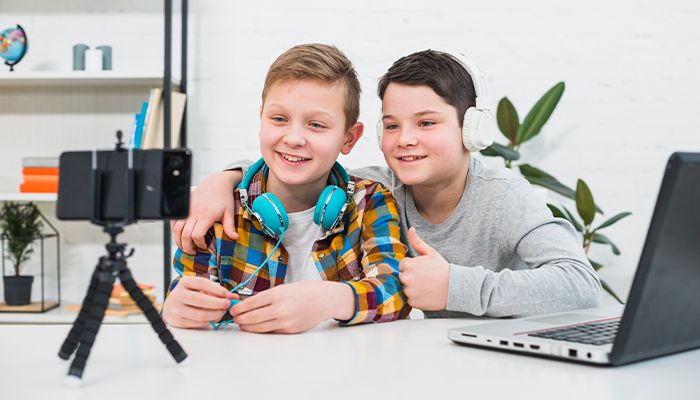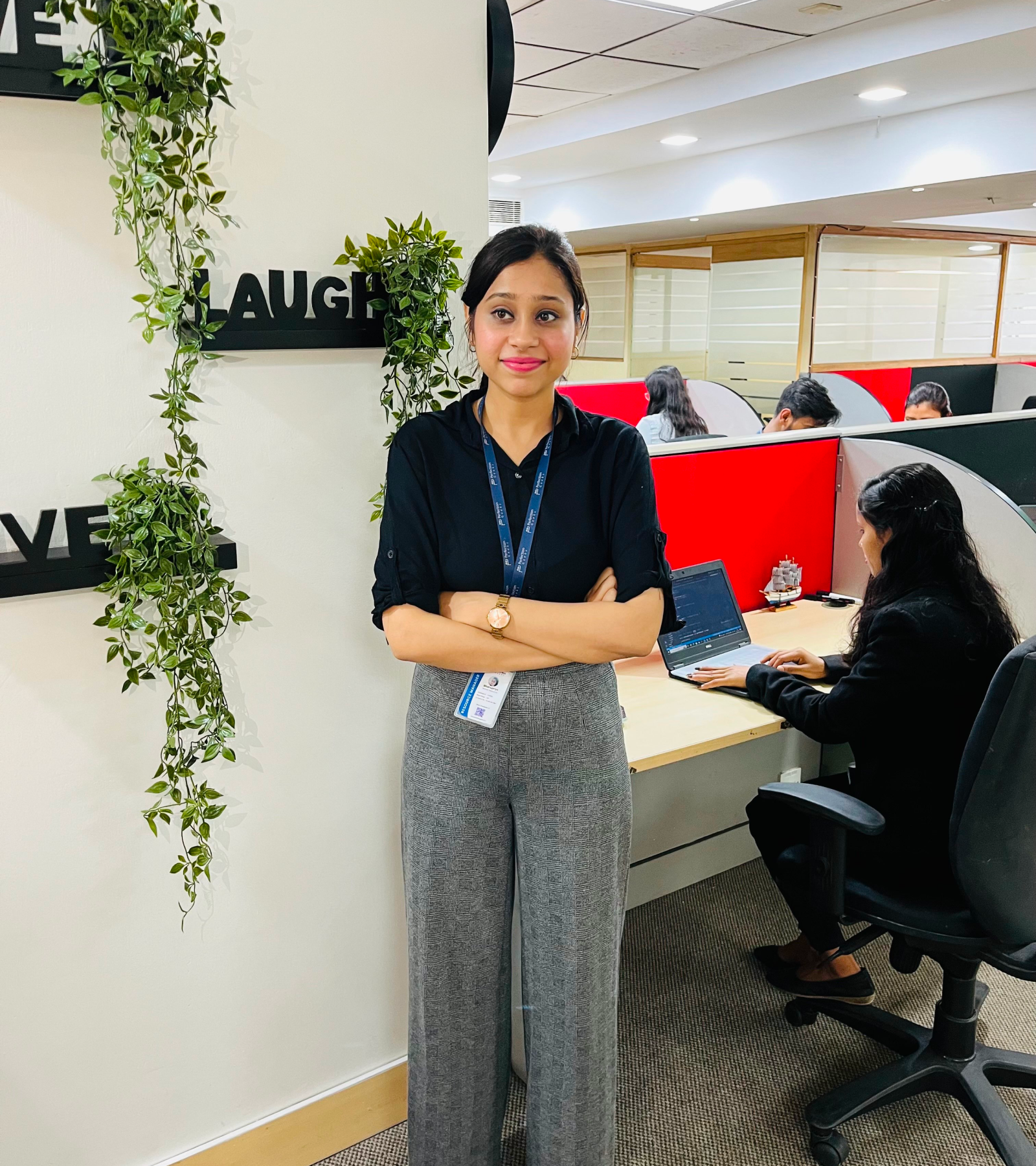How Do You Build a Kids Learning App?

MAY, 21, 2024 14:30 PM
How Do You Build a Kids Learning App?
In today's digital age, educational technology has revolutionized the way children learn and interact with content. Kids learning apps have become increasingly popular due to their ability to engage young minds in a fun and interactive manner. If you're considering building a kids learning app, you're entering a dynamic and rewarding space. In this comprehensive guide, we'll walk you through the essential steps and considerations to create a successful kids learning app.
Understanding the Market and Audience
Before diving into development, it's crucial to understand the market landscape and your target audience. Conduct thorough market research to identify:
- Market Trends: Analyze trends in kids' educational apps, such as popular features, themes, and monetization strategies.
- Competitor Analysis: Study existing apps to identify strengths, weaknesses, and gaps you can fill.
- Target Audience: Understand the age group, interests, and educational needs of your target users.
Defining Your App's Purpose and Goals
Clearly define the purpose and goals of your kids learning app. Consider the following aspects:
- Educational Objectives: What subjects or skills will your app focus on (e.g., math, language, creativity)?
- Learning Methodology: Determine the approach to learning (e.g., gamification, interactive quizzes, storytelling).
- User Experience (UX): Design an intuitive and engaging user experience tailored to children's cognitive abilities.
Design and Development Process
The design and development phases are critical to creating a high-quality kids learning app. Follow these steps:
- Conceptualization: Create wireframes and mockups to visualize app features and flow.
- UI/UX Design: Design child-friendly interfaces with vibrant colors, simple navigation, and interactive elements.
- Development: Choose the right technology stack (e.g., Swift for iOS, Java/Kotlin for Android) and develop core functionalities.
- Testing: Conduct extensive testing to ensure usability, performance, and content appropriateness for children.
Key Features and Content
The success of a kids learning app often hinges on its features and content. Consider including:
- Interactive Lessons: Engaging lessons with multimedia elements (videos, animations, audio).
- Games and Challenges: Educational games and puzzles to reinforce learning.
- Progress Tracking: Tools for parents and educators to monitor children's progress and performance.
- Personalization: customizable content based on individual learning needs and preferences.
Monetization Strategies
Monetization is an essential aspect of app development. Consider the following monetization strategies:
- Freemium Model: Offer a free version with basic features and charge for premium content or an ad-free experience.
- In-App Purchases: Sell virtual goods, additional levels, or features within the app.
- Subscription Model: Offer monthly or yearly subscriptions for access to premium content and features.
- Ads: Display child-friendly ads or sponsored content (ensure compliance with COPPA regulations).
Compliance and Safety
When developing a kids learning app, prioritize compliance with regulations and safety standards:
- COPPA Compliance: Adhere to the Children's Online Privacy Protection Act's (COPPA) guidelines for data collection and privacy protection.
- Content Safety: Ensure all content (text, images, and videos) is age-appropriate and free from harmful or offensive material.
- Parental Controls: Implement parental controls to manage app usage and permissions for children.
Marketing and Promotion
Once your app is developed, focus on marketing and promotion strategies to reach your target audience.
- App Store Optimization (ASO): Optimize app store listings with relevant keywords, compelling visuals, and positive reviews.
- Social Media: Leverage social media platforms to showcase app features, share educational content, and engage with parents and educators.
- Partnerships: Collaborate with schools, educational organizations, or influencers to promote your app and reach a wider audience.
- User Feedback: Encourage user feedback and reviews to improve app performance and address user concerns.
Continuous Improvement and Updates
The journey doesn't end after launching your kids learning app. Continuously gather user feedback, analyze app performance metrics, and make iterative improvements.
- User Feedback: Collect feedback from parents, educators, and children to identify areas for improvement.
- Analytics: Use analytics tools to track user engagement, retention rates, and app performance metrics.
- Updates and Enhancements: Regularly update your app with new content, features, and bug fixes to keep users engaged and satisfied.
- Community Building: Build a community around your app through forums, newsletters, and events to foster engagement and loyalty.
User Engagement Strategies
Creating engaging content and implementing effective user engagement strategies are crucial for the success of your kids learning app. Consider the following strategies:
- Gamification: Incorporate elements like badges, rewards, and leaderboards to motivate children and make learning more fun.
- Interactive Quizzes: Include interactive quizzes and assessments to test knowledge and provide immediate feedback.
- Storytelling: Integrate storytelling elements to make learning more immersive and memorable.
- Incentives: Offer incentives such as virtual coins or unlockable content to encourage regular usage and participation.
- Social Features: Allow children to interact with friends or classmates within the app, fostering a sense of community and collaboration.
Educational Content Creation
The quality and relevance of educational content play a significant role in the success of your app. Consider the following tips for creating compelling educational content:
- Curriculum Alignment: Ensure that the app's content aligns with educational standards and curricula to provide value to parents, teachers, and students.
- Multimedia Integration: Use a variety of multimedia elements, such as videos, animations, interactive simulations, and audio, to cater to different learning styles.
- Skill Progression: Design content that progresses in difficulty levels to accommodate learners of varying abilities and provide a sense of achievement.
- Diverse Topics: Cover a wide range of topics and subjects to appeal to a broader audience and cater to different learning interests.
- Feedback Mechanisms: Include feedback mechanisms within lessons and activities to provide immediate feedback and reinforce learning outcomes.
Parental Involvement and Support
Incorporating features that facilitate parental involvement and support can enhance the overall user experience and encourage continued usage. Consider the following features:
- Parental Dashboard: Provide parents with a dashboard to track their child's progress, view performance metrics, and access educational resources.
- Notifications and Reminders: Send notifications and reminders to parents about upcoming lessons, achievements, and areas where their child may need additional support.
- Parent-Child Interactions: Facilitate communication between parents and children within the app, such as sharing achievements or discussing learning goals.
- Educational Resources: Curate educational resources, tips, and guidelines for parents to support their child's learning journey outside the app.
Accessibility and Inclusivity
Ensure that your kids learning app is accessible and inclusive to children of diverse backgrounds, abilities, and learning needs. Consider the following aspects:
- Accessibility Features: Incorporate features such as text-to-speech, captions, and adjustable font sizes to accommodate children with disabilities or special needs.
- Localization: Provide multi-language support and localize content to reach a global audience and cater to diverse cultural backgrounds.
- Inclusive Design: Design interfaces and interactions that are intuitive, easy to navigate, and inclusive of children with varying levels of digital literacy.
- Content Diversity: Include diverse characters, stories, and perspectives in your educational content to promote cultural awareness and inclusivity.
Compliance and Safety Measures

Compliance with regulatory standards and implementing robust safety measures are paramount when developing a kids learning app. Consider the following measures:
- Privacy Policies: Clearly outline your app's privacy policies, data collection practices, and security measures to ensure transparency and compliance with privacy regulations.
- Data Encryption: Encrypt sensitive user data and implement secure data storage practices to protect user privacy and prevent unauthorized access.
- Age Verification: Implement age verification mechanisms to ensure that the app is accessed only by the intended age group and comply with COPPA regulations.
- Content Moderation: Regularly review and moderate user-generated content, comments, and interactions to prevent inappropriate or harmful content.
- Parental Controls: Provide robust parental control settings to allow parents to manage their child's app usage, permissions, and content access.
Conclusion and Future Trends
Building a successful kids learning app requires a combination of innovative ideas, user-centric design, compelling content, and adherence to regulatory standards. By following the guidelines and strategies outlined in this comprehensive guide, you can create a valuable educational tool that engages young learners, supports parental involvement, and promotes a positive learning experience. As technology continues to evolve, keep abreast of emerging trends such as augmented reality (AR), artificial intelligence (AI), and personalized learning to enhance your app's capabilities and stay competitive in the ever-evolving edtech landscape.
In collaboration with PerfectionGeeks Technologies, you have the opportunity to create a cutting-edge kids learning app that inspires curiosity, fosters creativity, and empowers children to reach their full potential in a digital age of learning.
FAQS
How can I ensure that my kids learning app is safe for them to use?
Ensuring the safety of children using your app is paramount. Here are some steps you can take:
- Content Moderation: Regularly review and moderate user-generated content, comments, and interactions to filter out inappropriate or harmful content.
- Privacy Protection: Adhere to strict privacy policies and comply with regulations such as COPPA to safeguard children's data and privacy.
- Parental Controls: Implement robust parental control settings that allow parents to manage their child's app usage, permissions, and content access.
- Age-Appropriate Content: Ensure that all content within the app, including text, images, videos, and interactions, is suitable for the intended age group.
How can I make my kids learning app engaging and interactive for young learners?
Creating engaging and interactive content is key to keeping young learners interested. Here are some strategies:
- Gamification: Incorporate game-like elements such as badges, rewards, and challenges to make learning fun and motivating.
- Interactive Activities: Include interactive lessons, quizzes, puzzles, and simulations that encourage active participation and problem-solving.
- Multimedia Content: Use a variety of multimedia elements, such as videos, animations, audio, and storytelling, to cater to different learning styles.
- Social Features: Allow children to interact with friends or classmates within the app, fostering collaboration, competition, and a sense of community.
What are the best practices for monetizing a kids learning app?
Monetizing a kids learning app requires a careful balance between generating revenue and providing value to users. Consider these monetization strategies:
- Freemium Model: Offer a free version with basic features and charge for premium content, an ad-free experience, or additional features.
- In-App Purchases: Sell virtual goods, upgrades, or unlockable content within the app to enhance the user experience.
- Subscription Model: Provide subscription plans for access to premium content, exclusive features, and ongoing updates.
- Child-Friendly Ads: Display age-appropriate ads or sponsored content that aligns with the app's educational focus while ensuring compliance with privacy regulations and user experience standards.
How can I market and promote my kids learning app effectively?
Marketing and promotion are essential to reach your target audience and drive app downloads. Here are some effective strategies:
- App Store Optimization (ASO): Optimize your app store listings with relevant keywords, compelling visuals, positive reviews, and clear descriptions of features and benefits.
- Social Media Marketing: Leverage social media platforms to showcase app features, share educational content, engage with parents and educators, and run targeted advertising campaigns.
- Partnerships and Collaborations: Collaborate with schools, educational organizations, influencers, and content creators to promote your app, reach a wider audience, and gain credibility.
- User Feedback and Reviews: Encourage users to provide feedback, ratings, and reviews on app stores and use this feedback to improve app performance, address issues, and enhance user satisfaction.
Strategy
Design
Blockchain Solution
Development
Launching
Testing
Maintenance
Contact US!
India

Plot 378-379, Udyog Vihar Phase 4 Rd, near nokia building, Electronic City, Phase IV, Sector 19, Gurugram, Haryana 122015
Copyright © 2025 PerfectionGeeks Technologies | All Rights Reserved | Policy
Strategy
Design
Blockchain Solution
Development
Contact US!
India 
Plot 378-379, Udyog Vihar Phase 4 Rd, near nokia building, Electronic City, Phase IV, Sector 19, Gurugram, Haryana 122015
USA 
1968 S. Coast Hwy, Laguna Beach, CA 92651, United States
Copyright © 2025 PerfectionGeeks Technologies | All Rights Reserved | Policy






